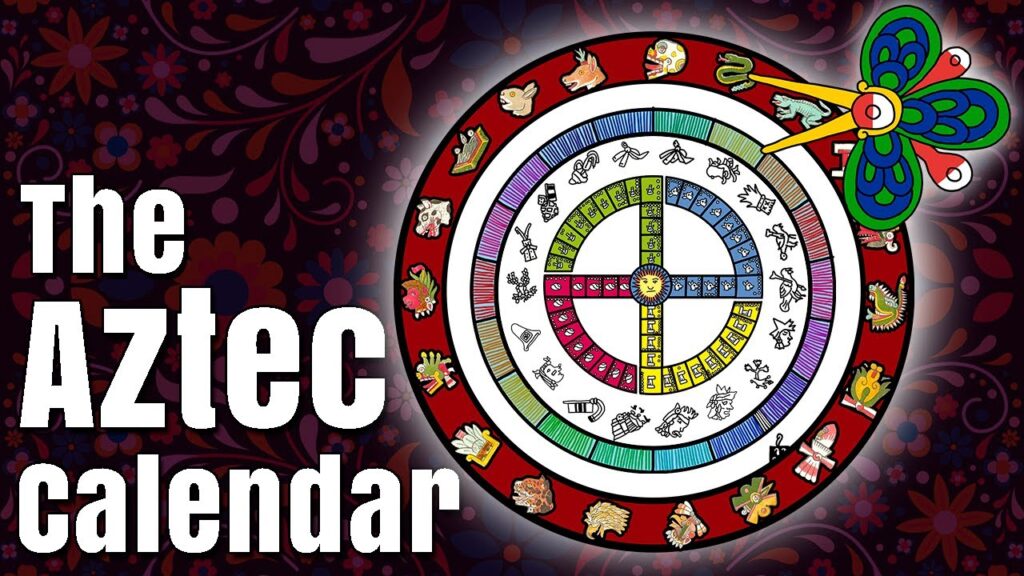The Aztec civilization occupied much of what is now central Mexico during the 14th – 16th centuries. Artwork from this period carries several themes. Many of the works of art associated with the Aztec civilization, often referred to as Aztec arts and crafts, reflect or pay homage to their deities. These sacred pieces range from small, metalwork to stone carvings.
- Transition in Aztec Art Styles
- Artists in Aztec Society
- Evolution of Aztec Arts and Crafts
- Insights from Aztec Arts and Crafts
- Nature's Influence on Aztec Arts and Crafts
- The Power of Aztec Arts and Crafts
- Branches of Aztec Art
- The 365-Day and 260-Day Calendars of the Aztecs
- New Fire Ceremony and its Impact on Aztec Arts and Crafts
- Metalwork and Jewelry
- Feather work Aztec
- Common Characteristics of the Aztec Arts and Crafts
Transition in Aztec Art Styles
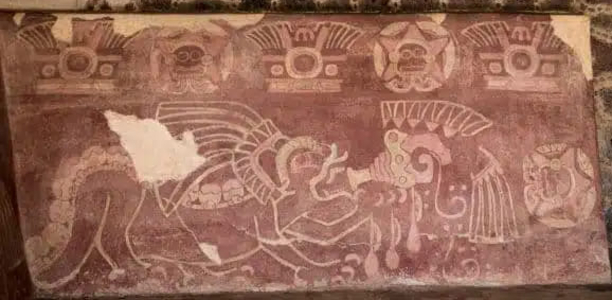
The aggressive warrior culture of the Aztec people is also clearly displayed in its artwork. As the empire grew, patterns moved from geometric to naturalistic. Animals and geographic features were incorporated into designs more frequently.
Artists in Aztec Society
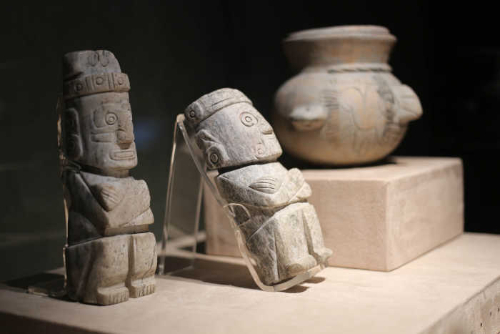
Most of the art created in Aztec society was destined for the nobility and the wealthiest members. Artists were well regarded, and held privileged positions within society. Despite that, artwork was not signed, but instead was considered the collective work of the Aztec people.
Evolution of Aztec Arts and Crafts
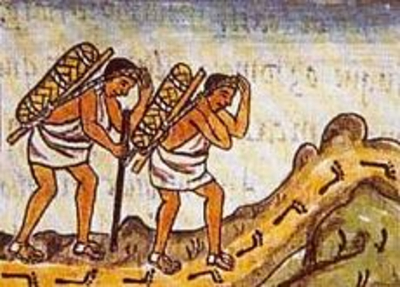
Many things influenced the design and composition of Aztec Arts and Crafts. Expanding trade spread Aztec influence and also brought new ideas and techniques to the empire. The geography of what is now Mexico is brought into art through the incorporation of local flora and fauna. Also, in many cases, art was used by the Aztecs as a form of propaganda.
Insights from Aztec Arts and Crafts
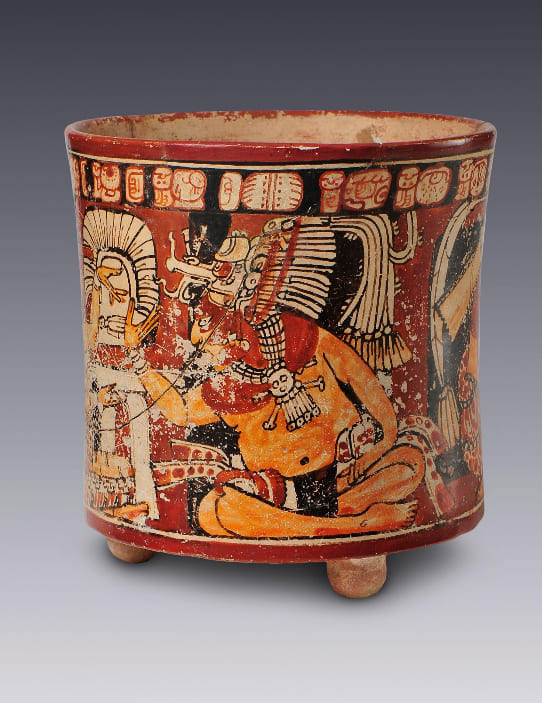
The Aztec Arts and Crafts did not develop in isolation. It carries many themes that are present in other Mesoamerican art, such as that from the Olmec, Maya, and Toltec civilizations. However, much of what we know about Aztec civilization and culture has been learned from their art.
Aztec Religion Through Sculpture
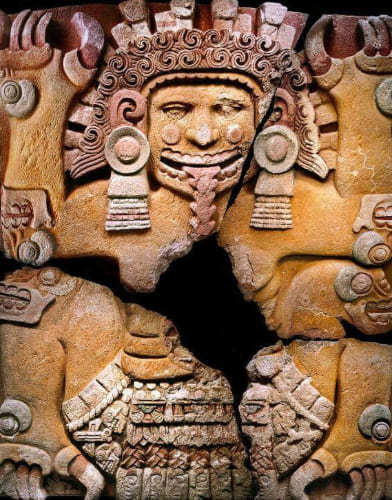
For example, the influence of religion is clearly visible in the art produced by the Aztecs. Statues of gods, some monumental, have been relatively well-preserved. We know about Aztec religious practices because of information found in these sculptures.
The Agricultural Significance in Aztec Art
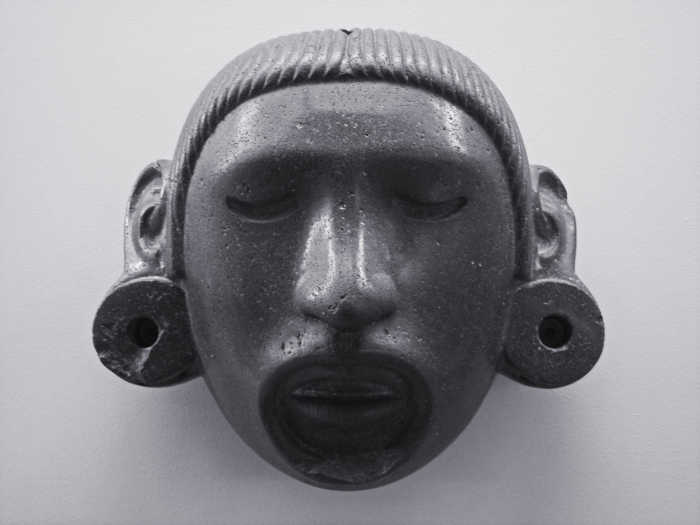
The agricultural god, Xipe Totec, is found in many Aztec carvings and sculptures. Other female maize deities, generally depicted wearing elaborate headdresses, are also common. This signifies the cultural importance of agriculture and corn among the Aztec people.
Nature’s Influence on Aztec Arts and Crafts
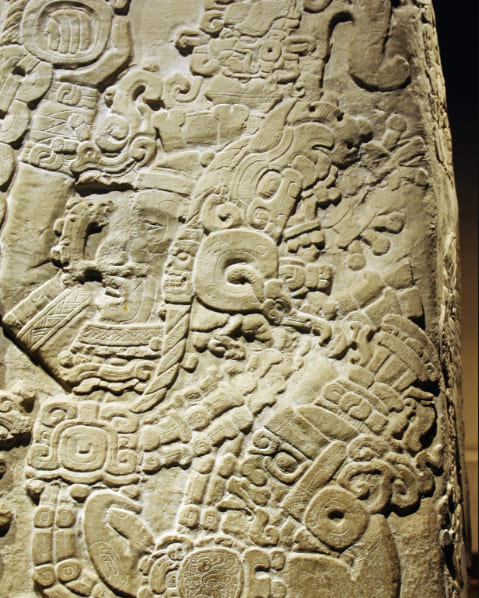
Local flora and fauna were common subjects of Aztec metalwork and small carvings. Many surviving pieces depict animals such as ducks, monkeys, snakes, and Jaguars. Coastal regions depicted fish and marine life in their artwork. These are all reflections of local animals that were familiar to the Aztec people.
Although many pieces of Aztec metal work were melted down by later inhabitants, some still survive. These show a strong geographical influence in their detail and remarkable craftsmanship.
The Power of Aztec Arts and Crafts

Art has long been used for propaganda purposes, and the Aztec civilization was not an exception. The Aztec view was spread throughout conquered territories through art and architecture. The temples dedicated to the Aztec gods were erected with the purpose of placing them above the local deities.
Political Influence on Aztec Artistic Expression

The Aztecs often claimed land previously sacred to local populations as another means of asserting dominance. Political gain and domination over conquered people had a large influence in Aztec art in this way.
Branches of Aztec Art
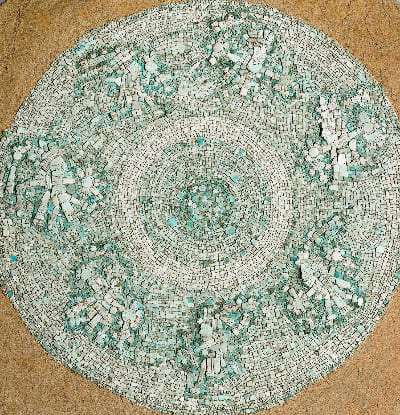
The variety of materials used in Aztec art is vast. You can see artwork from towering sculptures of stone to intricate turquoise carvings, all produced by local artists. These are some examples of artwork produced throughout the Aztec civilization.
Stone Sculptures
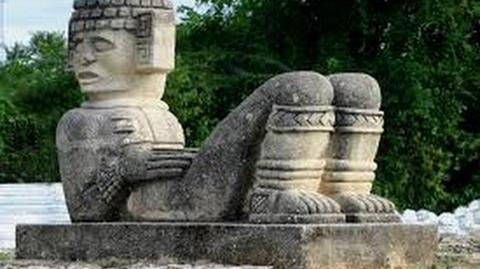
These can be found throughout central Mexico. Stone sculptures typically depict deities, with statues ranging in size from miniature to monumental.
Weight and size of the Aztec Sunstone
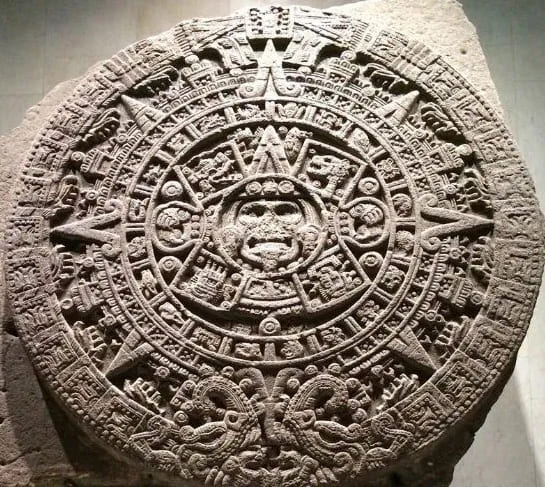
Perhaps the most well-known stone sculpture is the massive Aztec Sun Stone. Carved in the fifteenth century, this stone disc weighs 25 tons and is 12 feet (3.66 m) across. It is carved from a solid piece of basalt, formed from solidified lava.
Decoding the Central Disc of the Sun Stone

The central disc of the Sun Stone is devoted to the sun god Tonatiuh. He is depicted with a blade-shaped tongue, holding a heart in each of his hands. Surrounding the central disc are 4 squares, each representing one of the previous eras of history.
The 365-Day and 260-Day Calendars of the Aztecs
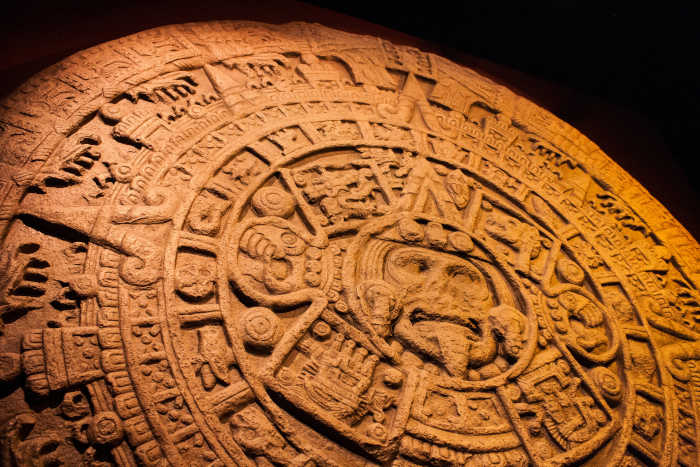
This ring symbolizes a solar calendar spanning 365 days, surrounded by a sacred calendar composed of 260 days. Every 52 years these calendars would coincide, and the Aztecs would offer sacrifices to Tonatiuh with the New Fire Ceremony.
New Fire Ceremony and its Impact on Aztec Arts and Crafts
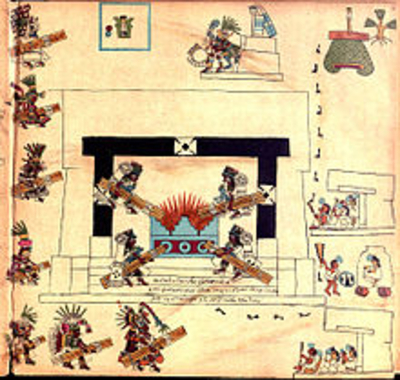
In a unique tradition, all household goods (including pottery) were destroyed in the New Fire Ceremony every 52 years. This allows historians to understand the development of pottery throughout the reign of the Aztec empire.
Role of Pottery in Aztec Society

Pottery was artistic as well as utilitarian in Aztec society. Earrings and sculptures were commonly made form pottery. Occasionally masks were made from pottery, although other materials were more common. Aztec pottery frequently adorned temples of their gods.
Transformation of Aztec Pottery
Aztec pottery is most commonly known for its later stages. This style, called Aztec III black-on-orange, featured designs in orange and black, often on a white background. Early rigid and rectangular designs gave way to more graceful, curved patterns. These, in turn, became more naturalistic, showcasing the rich tradition of Aztec arts and crafts.

Metalwork and Jewelry
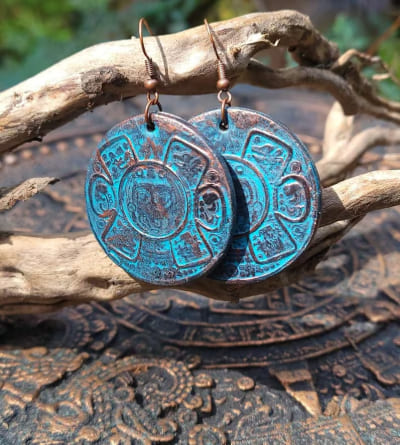
Not all carving was done from stone. Metallurgical work was a highly valued artistic expression among the Aztecs. Piercings, jewellery, and other small pieces have been found. These depict a wide variety of natural and sacred objects. Aztec metallurgy stands out for its remarkable skill in filigree and casting techniques.
Feather work Aztec
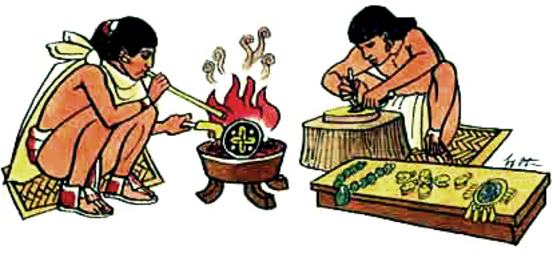
Aztec feather work was perhaps the most skilled of all their art forms. Feathers were woven into intricate and incredibly ornamental cloaks and headdresses. These specialized pieces were made by highly respected artisans called Amanteca.
Feather Work in Aztec Arts and Crafts
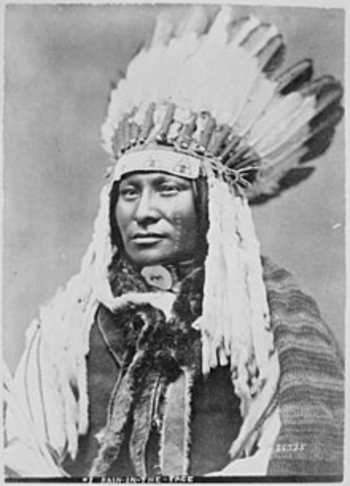
Feather work was reserved primarily for people of nobility or great wealth. Feathers were also attached to shields and capes of Aztec warriors. These were glued or sewn into figurative designs which identified the social status of the bearer.
Aztec feathers in art and museums
Aztec feather work survives primarily as depicted in other art forms. A limited number of pieces can be found in museums. Perhaps the most famous piece of Aztec feather work is the Penacho of Moctezuma II on display in Austria’s Weltmuseum Wien. This resplendent piece of art is the only known surviving headdress of its kind.

Common Characteristics of the Aztec Arts and Crafts
Aztec art is known to have shown realistic expression of characteristics such as age and expression. No matter the materials or subject, these common characteristics largely define Aztec art.
- Realistic depictions of the natural world. Patterns moved from geometric to naturalistic, often depicting geographical features or native plants and animals.
- Lifelike representations of people. Aztec artists showed people in amazingly lifelike detail. This may have reflected a cultural desire to conquer all – even death and despair.
- Black, red, and orange colouring of pottery. Known as the black-on-orange design, this characterizes late period Aztec pottery.
- Bold colours and sharp, angular carvings reflecting the aggressive warrior culture of the Aztec people
Interesting article : The Aztec Calendar and its Profound Meaning



